
Rocks and Geology Around Las Vegas

Conglomerate Rocks are formed by the cementing together of particles that eroded from pre-existing rocks. Particles (boulders, rocks, gravel, sand, etc.) are washed or blown away to accumulate somewhere else, and if left in place long enough, can become cemented to form new stone that still shows the character of the original rocks.
Alluvial fans are made of particles eroded from the mountains upon which the alluvial fans are resting. Over time, alluvial fans can become consolidated, and in this case, the resulting conglomerate rocks are referred to as fan-glomerate rocks. As climate conditions change over the eons, water flowing out of the mountains can erode channels into the fanglomerate rock resulting in deep, narrow slot-canyons with highly sculpted walls.
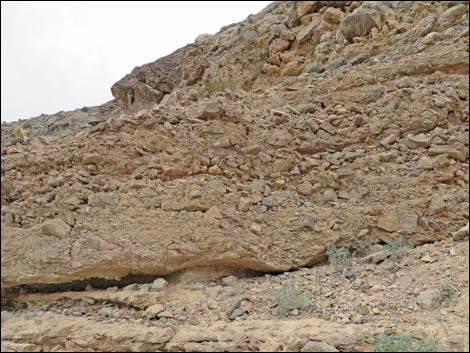 Banded cliff shows signs of stream-flow sorting |
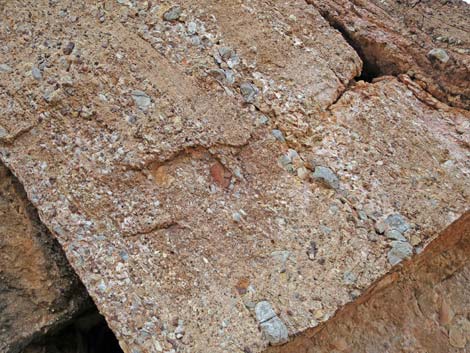 Banded rocks, now tilted, show signs of stream-flow sorting |
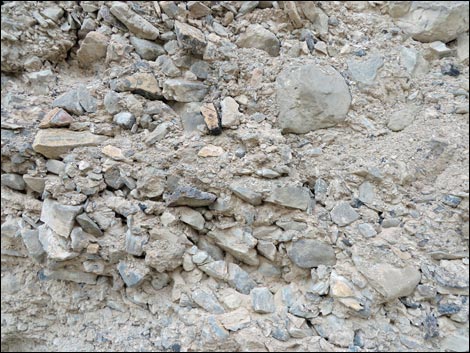 Poorly cemented conglomerate |
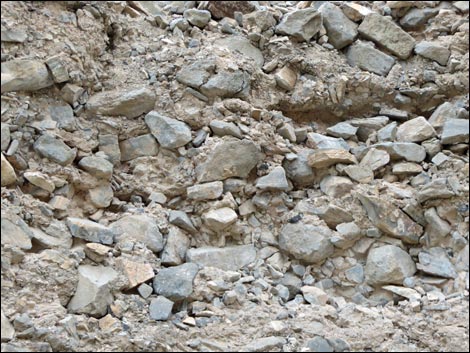 Poorly cemented conglomerate |
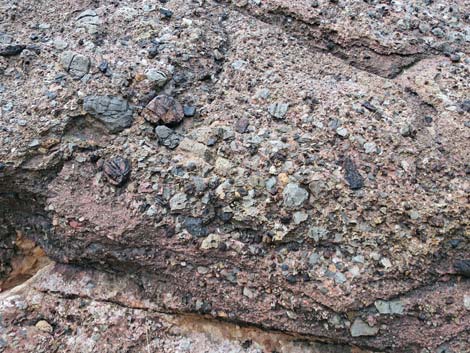 Limestone fragments cemented in red sandstone |
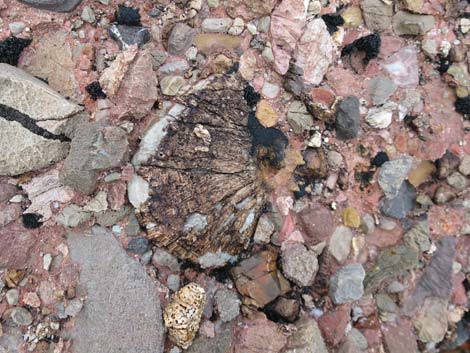 Limestone fragments (including fossil) cemented in red sandstone |
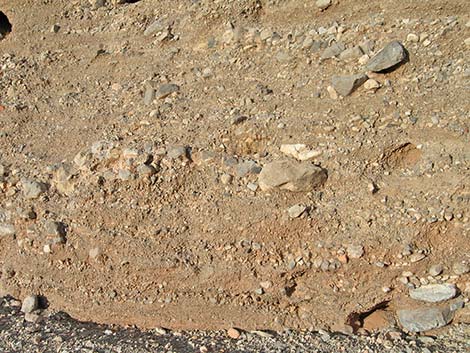 Loosely cemented alluvial material along a wash |
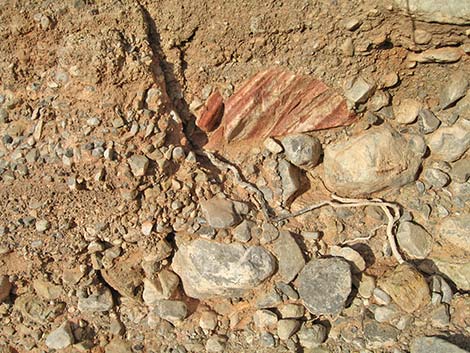 Loosely cemented alluvial material along a wash |
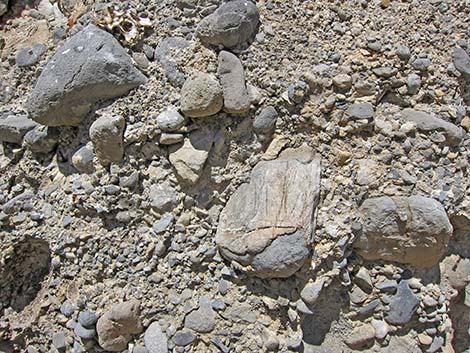 Cobbles of various sized cemented together |
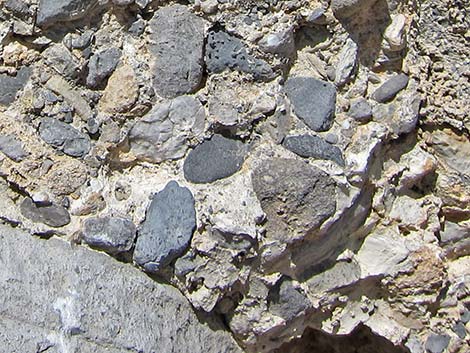 The white material is natural cement |
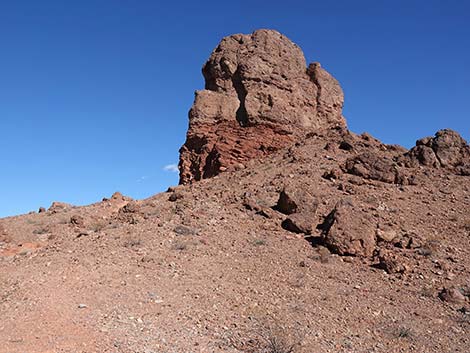 The Pinnacle near Lake Mead capped with Thumb Breccia conglomerate |
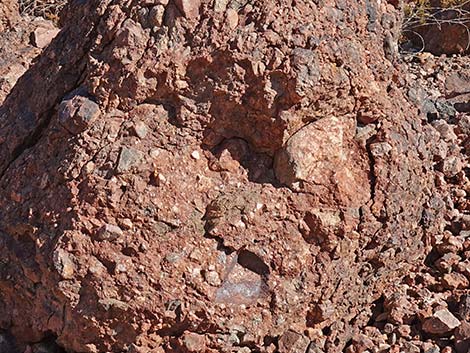 Thumb Breccia: composed of Precambrian gneiss and rapakivi granite |
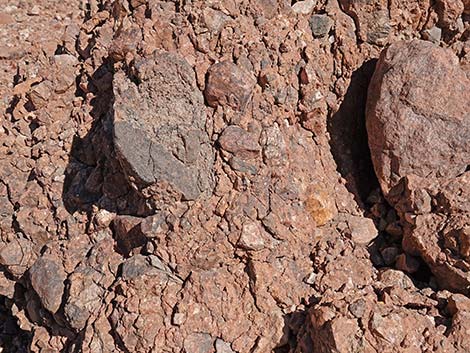 Precambrian gneiss and rapakivi granite |
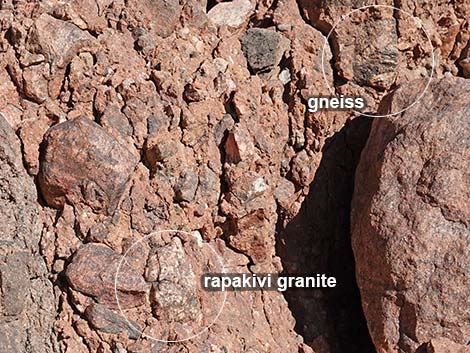 Precambrian gneiss and rapakivi granite |
| Rocks and Geology | Hiking Around Las Vegas | Glossary | Copyright, Conditions, Disclaimer | Home |